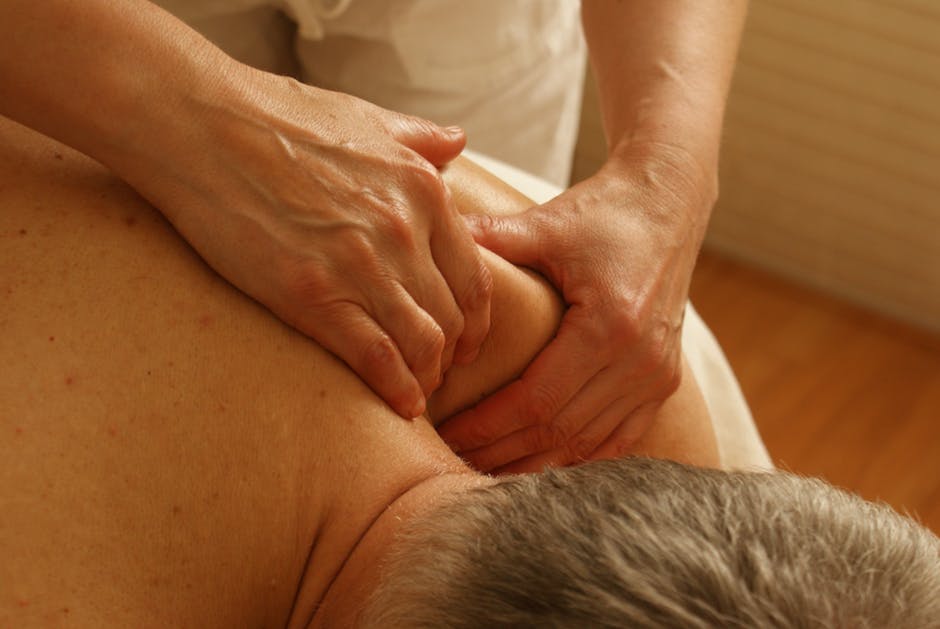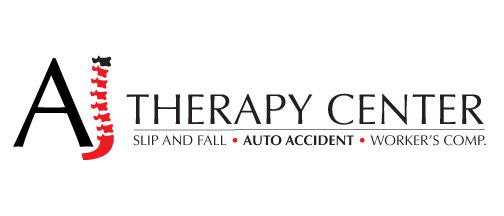
Car Accident
Did you know that over 80% of Americans experience neck or back pain?
If you’re one of them, no doubt you’re eager to reduce or eliminate that pain. Whether you were injured in a car accident or you’re suffering from a chronic health disorder, physical therapy can help.
In fact, neck and back pain is one of the primary reasons people seek care from physical therapists.
Are you familiar with mechanical traction therapy? In this post, we’ll explore this unique modality and determine if it’s the right solution for you.
Read on to learn more.
Spinal Traction 101
A major cause of neck and back pain is spinal compression.
When there’s too much pressure on the spine, it compresses the discs between the vertebrae. This can result in pinched nerves, slipped discs, or spinal stenosis.
Traction therapies–whether manual or mechanical–seek to reverse gravity’s effect on the spine. The goal is to safely and gently stretch the spine to relieve the pressure (and the pain).
Some manual therapies include stretching the neck through spinal traction. Your therapist will use their hands to traction your head and neck and relieve pressure on the spine.
Depending on your condition, your therapist may also recommend mechanical cervical traction.
Why? Studies have found it’s highly effective in relieving neck pain, both immediately and long-term. It can also reduce symptoms associated with headaches, shoulder pain, and carpal tunnel syndrome.
What Is Mechanical Traction?
What should you expect from mechanical traction therapy?
In most cases, you’ll lie on your back on a clinic table. Your physical therapist will attach a comfortable halter or cradle to the back of your head.
The other end of the cradle is attached to a machine, which your therapist will turn on for a set period of time. The machine will apply a gentle traction force to your head to create more space in your spine.
Mechanical traction can be static, applying steady, consistent pressure during the session. It could also be intermittent, alternating between gentler and stronger pressure for set periods of time.
This could be an excellent treatment for you if your body requires more force than your therapist can manually provide.
Is mechanical traction safe? Absolutely! Some patients experience minor muscle spasms during or after the treatment, but this is part of the body’s natural healing process.
The results include decompressed joints, proper spinal alignment, and–most importantly–pain relief. You’ll be amazed at how much easier it is to move and how much better you feeRest assured that you don’t have to live with chronic pain. You’re also not doomed to go under the knife or take opioids for pain management.
Mechanical traction therapy under the supervision of a skilled physical therapist could be the answer you’re seeking. It’s one of many safe and effective services at AJ Therapy Center.l throughout the day.
Is Mechanical Traction Therapy Right For You?
We invite you to contact us anytime with questions or concerns. Together we can take your health to a whole new level!

Car Accident
Whiplash may not seem like a severe injury, but in one-third of whiplash cases, patients report neck pain up to a decade later. Some of these patients will have persistent neck pain for the rest of their lives.
The best way to prevent lifelong chronic pain is to seek immediate treatment. This treatment may include ultrasounds, massage, cold therapy, manual techniques, and other exercises.
Of course, to know if you need treatment, you need to know the warning signs of whiplash. Check out the guide below to find out more.
What Is Whiplash?
Whiplash is an injury that specifically affects the neck. Other words for whiplash include neck sprain or neck strain.
It can occur when the neck experiences a sudden extension, or straightening movement. It can also occur after a sudden flexion, or bending movement.
These sudden movements can damage the soft tissue in the neck. This is because the body spasms to protect itself. The impact of sudden movements, combined with body spasm, can cause nerve impingements and other injuries.
1. Your Neck Hurts
The number one sign of whiplash is pain in your neck, although not all whiplash patients feel this pain right away.
As previously stated, whiplash entails a sudden extension or flexion of the neck. These movements overstretch the neck, damaging the tendons and ligaments in there. These parts are known as soft tissue.
The pain in your neck may hurt when moving it, but it may also hurt to the touch.
2. Your Head Hurts
Not only will your neck hurt, but you may have a headache as well. This is a common symptom of whiplash.
This headache is related to your neck injury. The damage to the nerves and soft tissue in your neck may also reach your brain stem. This can cause a chronic headache.
It may feel as though the pain in your neck is spreading up to your head.
3. Your Shoulders Hurt
If the nerve damage can affect your brain stem, it can also affect your shoulders. The worst part about whiplash is how many other parts of the body it can affect.
If you feel pain in one shoulder, both shoulders, or between the shoulders, it is likely a part of your whiplash.
4. You Feel Dizzy
Sudden movements are not only bad for your neck, but other body parts as well. Whiplash may even cause persistent dizziness for years.
Doctors believe the dizziness is not caused by brain injury, but inner ear injury. Vestibular nerve injuries can be difficult to recover from.
5. You Can’t Focus
Some whiplash patients complain of neurological problems after their injury. These include concentration problems and memory problems.
These indicate a more serious brain trauma that may have accompanied the whiplash during the traumatic event. You should seek immediate medical treatment should you experience this symptom.
Get Whiplash Treatment
If you or a loved one may have whiplash, it’s important to have a physical exam as soon as possible. After the condition is confirmed, seek out a medical professional for whiplash treatment.
At AJ Therapy Center, we have bilingual doctors, physical therapists, and staff ready to help with neck-related injuries. To start your treatment right away, don’t hesitate to contact us.

Car Accident
Every year in America, an estimated 2.35 million people are injured or disabled in an automobile accident. If you’re one of them, your doctor has probably recommended that you seek physical therapy.
You may be thinking, “My injuries aren’t that bad. How could physical therapy possibly help me? I can do exercises on my own.”
While that may be true, physical therapy is geared to help deal with the hidden injuries that go along with car accidents. So whether you’re looking into physical therapy in St. Petersburg, Tampa, or another part of Florida, keep reading to find out the five signs you need to seek physical therapy.
What to Expect Physically After a Car Accident
Even minor car accidents can cause serious injuries. Even if you escaped without any broken bones, there may still be damage to your joints, muscles, and connective tissue. If you experience any of these five symptoms after an auto accident, physical therapy may be necessary for your recovery.
1. Significant Injuries
Car accidents often result in bone fractures, muscle tears, and dislocated joints. If you received any significant injuries like these, especially any ones that needed surgery, you’ll definitely need to see a physician. Leaving injuries like these untreated can cause significant long-term pain and weakness.
2. Sharp Pain
If you have consistent sharp pains after an accident, it’s important to schedule a physical therapy evaluation. Sharp pain can be a sign of serious muscle tears, stress fractures, or joint damage that may worsen over time.
3. Dull, Lingering Pain
Some soreness is normal after a car accident and can generally be treated with ice, heat, and rest. But if you still have dull, lingering pain that medication doesn’t help, you may have an invisible injury.
Car accidents can cause injuries that take hours or days to cause pain. These include whiplash, micro-tears, and scar tissue formation. Even though they’re not visible on an x-ray, they can lead to chronic pain and inflammation if left untreated.
4. Weakness, Numbness, or Tingling
While you may think that you can just tough out these “minor” symptoms, they’re signs of a larger problem that will only get worse if ignored.
Some weakness is to be expected after an injury. But if it doesn’t improve naturally, or if it comes with numbness and tingling, it may be a sign of inflammation or misalignment. Our physicians are trained to treat these conditions with specialized therapy techniques and equipment.
5. Decreased Range of Motion
Have you noticed that you can’t lift your injured arm above your head anymore? Or that you’re unable to straighten your knee all the way? This common side effect of car accident injuries is called decreased range of motion, or ROM.
One of the main goals of physical therapy is to restore ROM and mobility. Working with a licensed therapist will help you increase your ROM back to normal levels without causing more injury to the affected tissue.
How to Tell if Physical Therapy Is Working
Physical therapy won’t cure you after one visit. It takes time, dedication, and a lot of hard work—but the results are worth it.
Our therapist will design a personalized plan for you that may include a combination of manual therapy, therapeutic exercises, massage, and other treatments. If you’re diligent and follow their instructions, you’ll likely see a huge decrease in pain as your strength and mobility returns.
Physical Therapy in St. Petersburg
Instead of searching the web for “physical therapy near me,” give AJ Therapy Center a call. We provide high-quality physical therapy in St. Petersburg and the greater Tampa Bay area.
Our experienced bilingual staff is here to help you recover from any and all auto accident injuries. If you’ve been injured in a crash, contact us today for a free consultation.

Car Accident
Car accidents are aggressive and forceful. They impact sudden movement for the occupants and when the movement is stopped, a lot of pressure is exerted on the neck and back. It is no surprise that a car accident can cause serious back problems, but what is the exact cause of lower back spasms after a crash? Learn more here.
Lower Back Spasms
A muscle spasm is a subcategory of physical injuries that occurs when the body is subjected to physical trauma or dehydration. These involuntary contractions of muscles can also be the main injury in an accident.
For a car accident to cause lower back spasms, the accident had to suddenly and unexpectedly make the muscles in your back expand. The overstretching of muscle during a car accident will often lead to muscle spasms immediately while at the scene of the accident or over some time.
Internal Causes of Lower Back Spasms
Injuries that lead to muscle spasms occur when the body is forced into motion while in a car accident. Seatbelts are great safety measures as they hinder body movement and thus limiting injuries but they can also lead to other types of injuries.
While the body’s movement might be limited by a seatbelt, the movement still continues internally. Your organs will move until they reach a stopping point. This will exert pressure on the spine and could lead to pulled lower back muscles which can manifest as lower back spasms.
The different injuries resulting from car accidents that lead to lower back spasms can be classified into:
- Disc injuries where the disc itself is injured or intervertebral disc suffers the injury.
- Face joint injuries that are experienced on the bony protrusions on the spinal column and are often the cause of neck spasms.
- Spinal fractures and muscular injuries are the more common causes of lower back pain. They are especially brutal if you tense up your body in anticipation of the accident.
Treatment of Lower Back Spasms
Depending on the magnitude of pain, back injuries resulting from car accidents can be treated. Medication is often offered as a pain management solution. However, physiotherapy offers a more permanent solution.
There are a vast number of institutions offering physical therapy for people that have been in auto accidents. To find one, all you have to do is look up your location, ‘Physical therapy near me’ for instance, and you will find numerous options for you to choose from.
Managing Lower Back Spasms
It is difficult to determine how long lower back spasms will last as every car accident is different and thus the consequences are not mirrored. A car accident can also cause whiplash. While whiplash is not a medical term, it is used to refer to a back injury that is pretty similar to the crack of a whip.
The neck and head jerk forward, then violently backwards when the car you are traveling in crashes onto something. As a result of the sudden movement, whiplash has been known to cause strain on muscles, ligaments, tendons, cartilage, and other tissues in a person’s back. The more common symptoms are short term and they include muscle spasms, sleep disturbance, dizziness, jaw pain, and back pain fatigue.
Keep reading our blog for more tips and tricks on pain management, as you continue to see a physical therapist.

Car Accident
Physical therapy is a common choice for individuals suffering from chronic inflammation. Over the counter muscle pain treatment might not be effective for your inflammation. You can get help from an experienced therapist.
Injury or lifestyle choices can cause muscle inflammation. Chronic inflammation also plays an important role in different health issues in the body.
Inflammation in the body leads to arthritis, obesity, bowel disease, and even diabetes. Common symptoms of inflammation include pain, weakness, and swelling.
Individuals should also be aware that muscle inflammation is not always harmless. You should get help from a physical therapist if it is difficult for you to do your regular activities. To reduce pain and discomfort, therapists use various techniques to treat the condition.
Here are good reasons why you need the help of a physical therapist to treat your condition.
1. Physical Exercise Reduces Muscle Inflammation
To make your movements easier and less painful during workouts, you should seek a therapist. Research shows that 20 minutes of daily physical exercise provides anti-inflammatory benefits.
When you exercise, muscle cells release a protein called interleukin 6. This is beneficial for reducing inflammation. Doing physical exercise on a regular basis also lowers levels of the bad protein called TNF alpha, which causes inflammation.
The body releases more interleukin 6 when you have longer workouts. Therapeutic exercise also reduces pain, swelling and improves the function of the muscles.
2. Heat and Cold Therapy
During a physical therapy session, a therapist uses heat or cold therapy to deliver long-term results. If you have an injury, heat therapy is a technique that increases circulation to the injured tissues. Heat therapy is beneficial for muscle spasms, muscle tightness, and joint pains.
Cold therapy is also effective for reducing swelling and for healing.
3. Manual Therapy
Do you need the easiest way to relax your muscles and to get rid of inflammation for good? You can try manual therapy for this problem.
Physical therapists use manual therapy. This is a great way for you to reduce inflammation in the muscles and to relax your muscles. This physical treatment includes manipulation of muscles, kneading injured muscles and joint manipulation.
This common technique reduces pain, decreases muscle tension, and increases blood circulation.
4. Ultrasound Therapy
Ultrasound therapy is a safe technique that is beneficial to patients with mild to chronic inflammation. There is much evidence that ultrasound therapy produces anti-inflammatory effects.
Ultrasound therapy uses different settings in various stages throughout the healing process. This is an effective treatment that works quite well on patients. You have a safe option to reduce and control various levels of inflammation in your muscles. This could be the right therapy for you.
Get Relief with Customized Physical Therapy
Do not delay to schedule an appointment with a good physical therapist. A physical therapist will provide a program that relieves your muscle inflammation.
Regardless of the severity of your condition, a therapist helps you to control dangerous levels of inflammation. If you’re in need of a therapeutic program for your condition, please schedule an appointment with us.

Car Accident
According to a recent survey, 47.9 percent of physical therapists use therapeutic ultrasounds for at least 75 percent of their patients. This treatment option is on the rise for patients in need of deep relief.
So what is ultrasound therapy? An ultrasound uses sound waves at a high frequency to affect the body’s tissues. In fact, ultrasound therapy offers a number of health benefits.
Ready to feel the sweet relief yourself? Keep reading to find out more!
1. Reduce Pain
For starters, therapeutic ultrasound can help relieve the pain you’re experiencing.
While healing your body’s deep tissue, the ultrasound also decreases muscle spasms. Spasms and muscle tightness can connect back to the root cause of your pain.
You should know the physical therapist in charge of your ultrasound therapy can make a difference, too. Ultrasound therapy prepares your muscles for additional therapeutic treatments.
This can make the treatments more effective in reducing your pain.
2. Relax Tissue Tension
According to the World Health Organization, musculoskeletal conditions are the second-largest contributors to disabilities across the world.
Musculoskeletal pain occurs when there’s damage to your muscle tissue. While general wear and tear can cause this damage, trauma makes an impact, too. That includes:
- Auto accidents
- Falls
- Fractures
- Dislocations
- Sprains
- Direct blows
- Jerking movements
Prolonged immobilization and repetitive movements can cause this pain, too.
Ultrasound therapy can give your tissues the deep heat they need to relieve tissue tension. In fact, the ultrasound affects soft tissue cell metabolism. When the ultrasound increases blood flow, it makes the cells more receptive to healing fluids.
As a result, therapeutic ultrasounds might help treat surgical wounds and soft tissue lesions, too.
3. Increase Blood Flow
Get your blood pumping! Increased blood flow can help reduce swelling around the injured area. It reduces chronic inflammation, too, which is associated with a number of health issues (including arthritis).
If you have a fresh injury with acute inflammation, your physical therapist can set the ultrasound to pulse.
Instead of generating a heating effect, this gets your blood pumping to reduce your pain.
4. Deep Heat
Forget using a hot pack. Ultrasound therapy can penetrate deep to relax deeper musculature or joint tissues.
To make it happen, the machine’s soundwaves cause the body’s tissues to vibrate. This generates heat while increases friction down to a molecular level. Then, the targeted tissues rise in temperature.
This treatment usually takes three to five minutes.
5. Breakdown Scar Tissue
The acoustic effect caused by ultrasound therapy creates tiny micro-vibrations. These vibrations affect the fibers that cause scar tissue to form.
Breaking down scar tissue can help increase your range of motion. It also helps you maintain that range of motion for longer relief.
Goodbye, Body Pain: 5 Benefits of Ultrasound Therapy
Say goodbye to body pain and hello to sweet relief with these five benefits of ultrasound therapy.
Ready to make the pain go away? Contact us today to schedule your next appointment.






